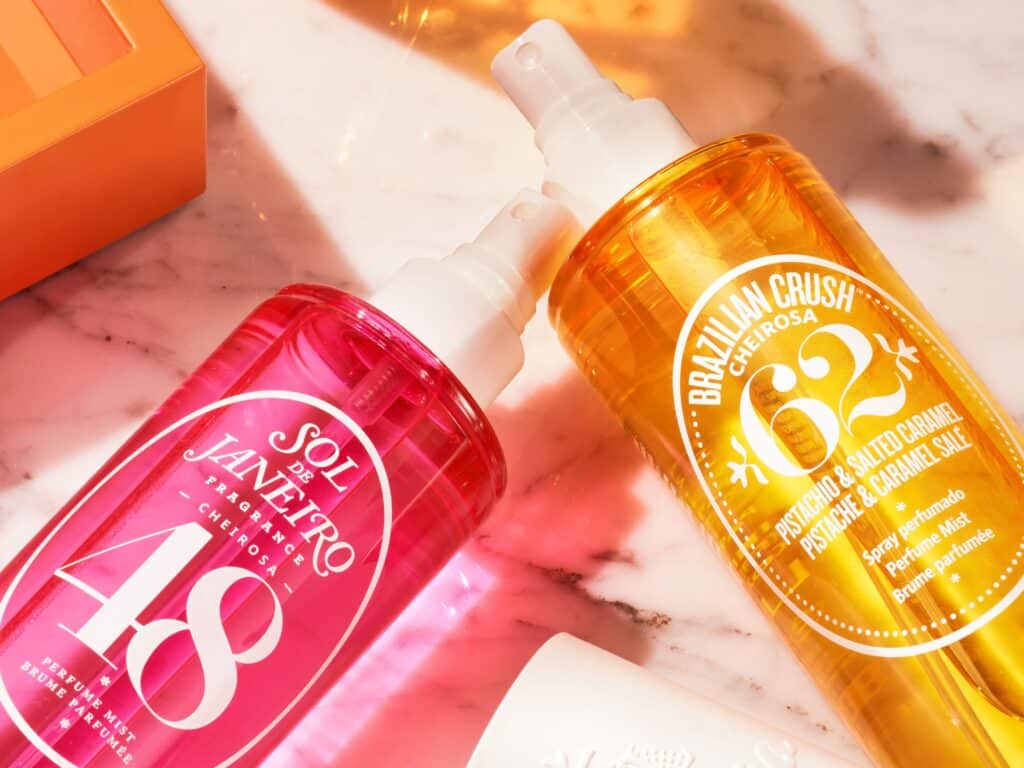Are brands at a loss for words? That is a question that has been permeating media and legal circles, alike, over the past couple of years, in particular, as a result of the continuing rise in the number of trademark registrations being granted every year by trademark bodies across the globe. While not a fashion-specific phenomenon, the continued overlap between the names of unrelated companies paired with an influx of interestingly-named new (and new-ish) apparel and accessories brands seems to suggest that something is, in fact, afoot in terms of the use of trademarks where the fashion industry is concerned.
To date, the general theory when it comes to the availability of trademarks – i.e., the words, logos, phrases, etc. that companies and individuals use to distinguish their goods/services from the goods/services of other companies – has largely been that “the supply of good, competitively effective trademarks is inexhaustible.”
Yes, the conventional wisdom at play – as New York University Law professors Barton Beebe and Jeanne C. Fromer state in their February 2018 paper, “Are We Running Out of Trademarks?”– holds that we will always “enjoy a surplus of pre-existing words that brands can adopt as names … that are at least as competitively effective as those already claimed.” However, that enduring understanding might not be panning out in practice considering the fact that “[a]lmost every naturally occurring word has been claimed [in a trademark capacity],” promoting companies to “so often arrive at portmanteaus” or alterative spellings of words (Lyft, anyone?).
The notion of endless trademarks-for-all also becomes curious given the rising number of trademark applications that are filed every year – an estimated 10.9 million trademark applications were filed in 2018, according to the World Intellectual Property Organization– and more generally, in light of the large-scale focus on trademarks by companies in the branding-heavy modern market. “Over six million companies and more than 100,000 products [are] launched every year,” the World Trademark Review reported in September, with “a high percentage of them seeking registered trademark protection,” making it “increasingly challenging to find a catchy, unique name.”
The result – a potential shortage in appealing brand names – can be seen in fashion and beyond. No small number of companies exist, harmoniously or otherwise, with the same or similar names. Sometimes two (or more) companies share a name but operate in different sectors, thereby, removing most of the potential consumer confusion-related concerns that come with name-sharing. Delta comes to mind, as the name is shared by an airline company and a faucet manufacturer; Dove, one being a chocolate company and the other, a personal care brand; and there is Domino, the sugar company, and Domino’s, the pizza company.
Other times, though, the distinction between similarly-named companies’ products and services is not quite so significant. Consider the name of Emily Current and Meritt Elliott’s apparel and footwear brand, The GREAT., their first venture since leaving their denim brand Current/Elliot, which is remarkably similar to that of The Greats, the footwear startup recently acquired by Steve Madden. To date, these two brands have co-existed peacefully, as did Creatures of Comfort and Creatures of the Wind, both of which operated in the high fashion space before the former ultimately called it quits and closed-up shop.
But peaceful co-existence is not often the norm. Look no further than Off-White. The Virgil Abloh-launched brand is currently facing a trademark infringement lawsuit for allegedly stealing the name of an existing company called … OffWhite. Valentino and an unrelated handbag brand named Mario Valentino are in the midst of trademark litigation, while New York-based designer Thaddeus O’Neilhas been embroiled in a battle before the U.S. Patent and Trademark Office (“USPTO”) ever since his trademark application for registration was opposed by surfwear brand O’Neill for being too similar.
Still yet, there is Alyx. While the name was largely popularized in the fashion industry by buzzy designer-slash-former Kanye West collaborator Matthew Williamson, it turns out another company, Byer California, had been using it for one of its brands for much longer, while also maintaining a registration for its use on clothing, which very well might be why Williamson abruptly announced a name change from Alyx to 1017 ALYX 9SM in May 2018.
It is against this background and informed their survey of the 6.7 million trademark applications filed with the USPTO from 1985 through the end of 2016, as well as their review of the 300,000 trademarks already registered with the USPTO as of 1985, that Fromer and Beebe conclude that “the supply of word marks that are at least reasonably competitively effective as trademarks” is hardly without limit.
In fact, the two New York University Law professors found that the supply of available and commercially attractive marks – i.e., “standard English words, short neologisms that are pronounceable by English speakers, and common American surnames” – is both “finite and exhaustible.” This is demonstrated, they state, by the many instances of trademark congestion. A phenomenon in which an already-claimed trademark is adopted by a number of unrelated entities, trademark congestion can be seen in the use of the same marks across brands, whether that be “Pink” for Thomas Pink and Victoria’s Secret or Alyx for two different fashion brands.
In addition to congestion, Beebe and Fromer found that the supply of available trademarks is “severely depleted, particularly in certain sectors of the economy,” such as fashion and retail more generally, and that “trademark depletion” – instances where the number of potential trademarks that remain unclaimed by any trademark owner is decreasing – continues to come into play.
In what is likely a response to the ever-shrinking number of words that remain unclaimed by companies in any given sector (i.e., depletion), new brands are being forced to “to resort to second-best, less competitive marks,” Beebe and Fromer assert, and when it comes to fashion, the results of this are widespread and striking. For instance, a sizable number of new (and new-ish) brands – such as Kassl, CQY (pronounced coy), SVNR (pronounced souvenir), SLVRLAKE, YSTRDYS TMRRW, GFT, LPA, KKCo, and KKW, the latter of which is Kim Kardashian’s beauty venture – are dropping letters from existing words or simply adopting monikers that consist of just a few letters in order to adopt distinctive names.
Others – like TL-180, 16Arlington, 200651, 6397, 1017 ALYX 9SM, and 205W39NYC (the latter of which is the name of the now-defunct Calvin Klein runway collection under former creative director Raf Simons) – are adding numbers to their names or relying exclusively on numbers to fashion original monikers. And still yet, brands, such as from byTiMo to Madhappy, are combining words to create new names.
By adopting these distinctive monikers, brands are able to achieve a few things. They stand to avoid running into confusingly similar trademarks that are already in use, which would likely prevent them from amassing registration(s) of their own. From a litigation perspective, the adoption of a name that is similar to an existing brand that is dealing in similar goods/services could result in name-specific legal squabbles like the ones described above, opting for an original moniker removes that risk. And in an even more practical sense, the adoption of unused names – no matter how unconventional – provides new brands with the chance to secure the valuable social media handles and domain names of their choice, which might otherwise be difficult since so many of those have already claimed been, as well.
The real consequence of the arguably over-saturated arena of trademarks falls on brands, as “new market entrants face significant barriers to entry in the form of the cost of searching for an unclaimed mark and in the ongoing cost of using a less effective mark,” Beebe and Fromer argue. But brands are not the only ones being impacted: consumers are being forced to navigate “an ever more crowded field of trademarks consisting of increasingly complex marks that may refer to multiple different sources.” All the while, “the public domain must cope with the fact that when we use our language, about three-fourths of the time we are using a word that someone has claimed as a trademark.”
As for whether all trademark scholars are in agreement about the extent of trademark congestion and depletion and the nature of the consequences, they aren’t. In a response to Beebe and Fromer’s article, entitled, “Does Running Out of (Some) Trademarks Matter?”, Lisa Larrimore Ouellette, an associate professor of law at Stanford Law School, took issue with the “lack of rigorous evidence regarding either the costs or the benefits of either depletion or congestion.”
Ouellette did not deny that there is “evidence of the high state of depletion and congestion of the most sought-after trademarks.” However, she claims that “we are not running out of trademarks [altogether], but we are clearly running out of some trademarks – common words, syllables, and surnames.” In terms of the effects, Ouellette asserts that there “is not yet any concrete evidence that trademark depletion and congestion impose any significant harms for either firms or consumers.”
“Future empirical study may well demonstrate that the resulting harms to new entrants and consumers outweigh any corresponding benefits, such as the benefits of reducing consumer choice and increasing innovation incentives,” but without it now, she says, “concerns about the exhaustibility of competitively effective marks might end up being no weightier than John Stuart Mill’s worries about the exhaustibility of musical combinations.”
In the meantime, it is difficult to deny the emerging growing pool of fashion brands whose names consist almost exclusively – or in some cases, exclusively – of consonants and/or numbers. What will be telling is whether these unconventional names prove to be as commercially viable as the names of some of their more traditional and straight-forward counterparts, or whether they will end up going the way of the not-so-successful 205W39NYC collection for Calvin Klein.














